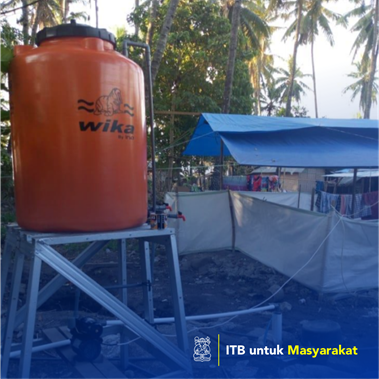

R. Bagus Endar Bachtiar N.
The Lombok earthquake on July 29, 2018 has resulted in severe damage to both public facilities and residence of the community. According to BNPB, 83,392 housing units were damaged and caused 396,032 people to displaced. Residents mostly displaced open fields or rice fields near their residence. In one refugee camp, the number of refugees reaches 100-500 KK where the need for clean water cannot be fulfilled properly. This is because the facilities of clean water networks from the PDAM are damaged. In addition, residents' wells experience siltation due to the liquidity process when the earthquake occurs. The residents looked refuge into open fields around their residence. These refugees live in emergency tents both established by residents and assistance from government and private agencies. LPPM ITB with Joint Funding Cooperation Hagi has drilled wells and builds the installation of water pumps in several refugee camps to get clean water supply that is needed for daily activities such as bathing, washing clothes and sanitation. This water drilling was conducted in Tembobor Hamlet Sigar Deni Description, Sire Hamlet, Sigar Village, Dusun, Jelulang Hamlet, Dalam Bay Hamlet and Jenggala Village. At present the well-drilled well has been utilized by residents valorated for daily needs.
Application of appropriate technology, the application of writing
To meet the need for clean water, the refugees relied on the shipment of clean water supply using a tank car from the government. This is due to a clean water pipeline network that had previously been available in damage due to the earthquake. This clean water supply is sent once a day as much as one tank (5000 liters) for one refugee camp. In addition to relying on the supply of clean water from the government, refugees also use residents' wells that can still be used.